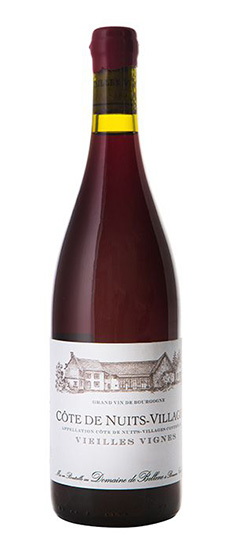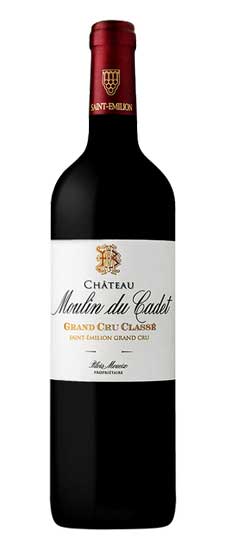Wine Score
91 points Jeb Dunnuck
A wine that’s been made since 1967, the 2019 Cabernet Sauvignon Napa Valley is a beautifully textured, medium-bodied, sweetly fruited charmer that has lots of cassis and redcurrant fruit, some spicy oak, ripe tannins, and the balance to evolve and drink nicely for a decade. I think it’s outstanding.
Grape Variety
Cabernet Sauvignon Wine
Cabernet Sauvignon is probably the most famous red wine grape variety on Earth. It is rivaled in this regard only by its Bordeaux stablemate Merlot, and its opposite number in Burgundy, Pinot Noir. From its origins in Bordeaux, Cabernet has successfully spread to almost every winegrowing country in the world. It is now the key grape variety in many first-rate New World wine regions, most notably Napa Valley, Coonawarra and Maipo Valley. Wherever they come from, Cabernet Sauvignon wines always seem to demonstrate a handful of common character traits: deep color, good tannin structure, moderate acidity and aromas of blackcurrant, tomato leaf, dark spices and cedarwood.
Used as frequently in blends as in varietal wines, Cabernet Sauvignon has a large number of common blending partners. Apart from the obvious Merlot and Cabernet Franc, the most prevalent of these are Malbec, Petit Verdot and Carmenere (the ingredients of a classic Bordeaux Blend), Shiraz (in Australia’s favorite blend) and in Spain and South America, a Cabernet – Tempranillo blend is now commonplace. Even the bold Tannat-based wines of Madiran are now generally softened with Cabernet Sauvignon.
DNA profiling carried out in California in 1997 confirmed that Cabernet Sauvignon is the product of a natural genetic crossing between key Bordeaux grape varieties Cabernet Franc and Sauvignon Blanc. Most wine authorities agree that this crossing happened only within the past few centuries, making the variety’s global fame and dominance all the more impressive.
There are two key reasons for Cabernet Sauvignon’s rise to dominance. The most simple and primordial of these is that its vines are highly adaptable to different soil types and climates; it is grown at latitudes as disparate as 50°N (Okanagan in Canada) and 20°S (northern Argentina), and in soils as different as the Pessac-Leognan gravels and the iron-rich terra rossa of Coonawarra. Secondary to this, but just as important, is that despite the diversity of terroirs in which the vine is grown, Cabernet Sauvignon wines retain an inimitable “Cab” character, nuanced with hints of provenance in the best-made examples. There is just a single reason, however, for the durability of the variety’s fame and that is simple economics; the familiarity and marketability of the Cabernet Sauvignon name has an irresistible lure to wine companies looking for a reliable return on their investment.
A vigorous variety (another characteristic in its favor), Cabernet Sauvignon produces a dense leaf canopy and relatively high grape yields, giving wine producers a fairly open choice between quantity and quality. Careful vineyard management is essential, however, to coax the best out of the fruit.
As a late-flowering and late-ripening variety, Cabernet Sauvignon grapes mature slowly. This can also work for or against wine quality; in a cold season or climate there is a risk of the grapes failing to ripen fully, while in most other conditions the steady rate of progress offers producers a wider choice of harvest dates.
Few would argue that the finest examples of Cabernet Sauvignon wine are found in Bordeaux and California, a standpoint supported by the 1976 Judgment of Paris. The past two decades have seen a raft of quality Cabernets emerging from New World regions such as Maipo in Chile and Coonawarra in Australia. These are gaining popularity with an increasingly broad consumer base as the world’s most prestigious Cabernet Sauvignon wines become prohibitively expensive. The variety has now made its way even into such established and traditional Italian names as Chianti and Carmignano (albeit restricted to 15 percent of the permitted blend), evidence that even the oldest and most traditional wine institutions now recognize the value of this most famous of grapes.
Synonyms include: Bidure, Bouche, Bordo, Bouchet, Burdeos Tinto, Lafite, Vidure.
Food matches for Cabernet Sauvignon include:
- Fillet steak with foie gras and truffles
- Beef wellington with honey roasted carrots
- Korean-style beef stir fried in garlic, soy and sesame
Region
Napa Valley Wine
Napa Valley, an hour’s drive north of San Francisco, California, is the most famous and prestigious wine region anywhere in the New World. Although a number of grape varieties are grown in the valley’s vineyards, the area is particularly known for its Cabernet Sauvignon. The classic ‘Napa Cab’, the archetypal Napa Valley wine, is a rich, oak-aged red with aromas of blackcurrant, boysenberry, liquorice, vanilla and smoky, bittersweet chocolate.
Situated immediately north of San Pablo Bay, the valley runs roughly SE – NW for approximately 35 miles (60km) between the Vacas and Mayacamas mountain ranges (to the east and west respectively). The scenic 40-minute drive between the Napa and Calistoga townships passes through some of the most valuable viticultural real estate on Earth.
There are several reasons for Napa Valley’s global renown as a wine region. Most obvious is that the wines are produced to high standards, in a popular style, and are very well marketed. Then there is the region’s accessibility from San Francisco. This draws millions of wine tourists to the valley each year to sample its wines and world-class gastronomy. And no less important (even after almost four decades) is the triumph of Napa Valley wines over their rivals from Bordeaux and Burgundy in the 1976 Paris Judgment.
Wine has been made in Napa Valley since the 19th century, but it is only since the 1960s that wine of any particular quality has been produced. The founding pioneers of Napa Valley winemaking were George C. Yount (see Yountville), and John Patchett and his winemaker Charles Krug, founder of the eponymous winery. Also of note are the Beringer brothers Jacob and Frederick, whose Beringer Vineyards (est. 1875) is one of California’s oldest continuously operated wineries and features on the the U.S. National Register of Historic Places. Robert Mondavi, who established his winery in 1966, is considered to be one of the pioneers of Napa’s modern wine industry, as well as being one of the first proponents of varietal labeling.
The range of grape varieties grown in the Napa Valley has evolved steadily over the 150 years since Yount planted his first vines. Cabernet Sauvignon has risen confidently to become Napa’s star performer, and is the most widely planted grape in almost all of the valley’s sub-regions. The notable exception to this rule is Carneros, whose cool, breezy mesoclimate is better suited to Pinot Noir and Chardonnay. Merlot is also prominent, although since its fall from favor in the 1990s it is now used mostly as a blending component for Napa’s Meritage wines and Bordeaux blends. Although it represents only a small proportion of the valley’s vineyard area here, Zinfandel remains significant in the Napa wine portfolio. Hillside sites above the valley floor provide exactly the kind of warm, dry environment in which Zinfandel (California’s signature variety) performs best, particularly on rocky, free-draining slopes.
White wines are strongly outnumbered here, but play a valuable supporting role, bringing an element of diversity to the valley. Once upon a time, Riesling was the variety of choice, but has now been replaced almost completely by Sauvignon Blanc and Chardonnay.
Climate, geology and topography are three essential components in what makes Napa Valley such a first-rate viticultural area. The combined influences of San Pablo Bay and the hills of the North Coast Ranges are responsible for the valley’s very particular mesoclimate. The bay generates morning fog, and the hills channel it inland, up into the valley. Without this fog that comes rolling in from the bays, the valley’s climate would be substantially warmer than it is, making it difficult to achieve structure and balance in the wines. The fog doesn’t reach the higher parts of the valley, however, leaving these to rely on the cooling effects of altitude to keep their vines in balance.
Producer Notes
About Freemark Abbey
Freemark Abbey is a winery located in Saint Helena in Napa Valley, California. Established in 1886 by Victorian widow Josephine Tychson, she was the first female winemaker on the record in Napa Valley. Over the years they have had a significant impact on the Napa wine industry, including being the only winery where both a red and white wine was represented in the Judgement of Paris tasting 1976. Today, they produce a range of wines from select vineyards in Napa Valley, focusing mainly on Cabernet Sauvignon from Rutherford.
After starting her winery in 1886, Tychson sold the property to her friend Antonio Forni in 1889, who renamed it Lombarda Cellars. He built the winery structure that still stands today. In 1939, the property was sold to California businessmen Charles Freeman, Marquand Foster and Albert “Abbey” Ahern. They promptly named it Freemark Abbey. They established one of the first tasting rooms in the area. The winery was sold to seven partners in 1967, where the focus became on Cabernet Sauvignon and Chardonnay. One of the very first vineyard designate Cabernet Sauvignon in Napa Valley was produced three years later, named Freemark Abbey Bosché. Over the years, the wines received much praise from the press, especially after their success in the Judgement of Paris tasting. In 2016, their success culminated when the National Football League seleted the 2013 Freemark Abbey Spring Mountain “Fiftieth Reserve” Bordeaux Blend as the commemorative Super Bowl 50 wine.
Freemark Abbey makes several Cabernet Sauvignon from many vineyards around Napa Valley. The two most famous are the Bosché Cabernet and Sycamore Vineyard Cabernet, both sourced from the Rutherford Bench. A smaller amount of different varieties are also made, including Cabernet Franc, Merlot, Chardonnay, and Sauvignon Blanc, to name a few. The wines, particularly the Cabernet Sauvignon, are noted for their elegance and longevity.



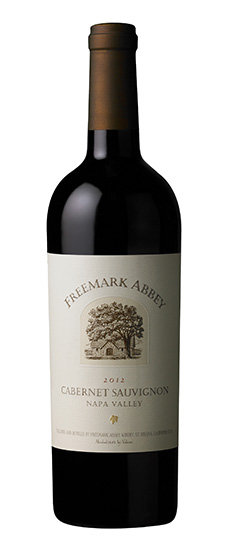
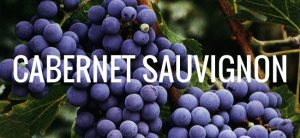
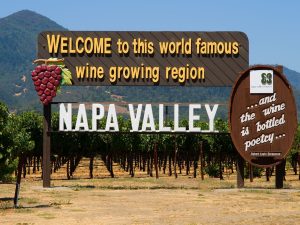


![Amuse Bouche, Napa Valley [Merlot/Cabernet Franc] 2010](https://www.wineyou.com/wp-content/uploads/2017/06/Amuse-Bouche-Napa-Valley-Merlot-Cabernet-Franc-2010.jpg)

